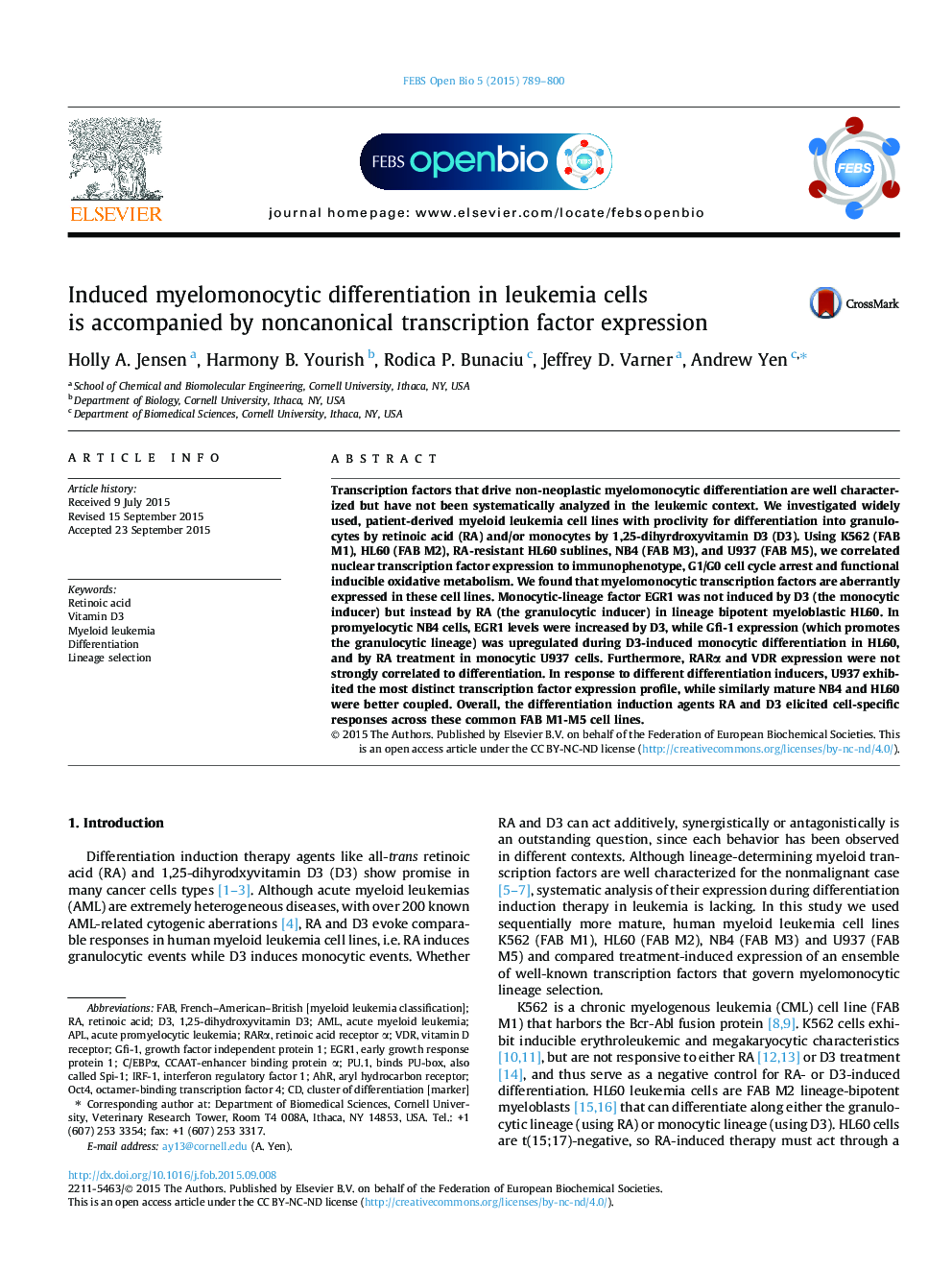| کد مقاله | کد نشریه | سال انتشار | مقاله انگلیسی | نسخه تمام متن |
|---|---|---|---|---|
| 1981645 | 1539419 | 2015 | 12 صفحه PDF | دانلود رایگان |
• We surveyed common myeloid leukemia cell lines undergoing differentiation therapy.
• Lineage progression in induced leukemia cell lines differs from nonmalignant cells.
• Aberrant transcription factor expression occurs in acute myeloid leukemia cells.
• A given differentiation therapy elicits different effects in specific cell lines.
• Although potent tools, cell lines must be employed with circumspection.
Transcription factors that drive non-neoplastic myelomonocytic differentiation are well characterized but have not been systematically analyzed in the leukemic context. We investigated widely used, patient-derived myeloid leukemia cell lines with proclivity for differentiation into granulocytes by retinoic acid (RA) and/or monocytes by 1,25-dihyrdroxyvitamin D3 (D3). Using K562 (FAB M1), HL60 (FAB M2), RA-resistant HL60 sublines, NB4 (FAB M3), and U937 (FAB M5), we correlated nuclear transcription factor expression to immunophenotype, G1/G0 cell cycle arrest and functional inducible oxidative metabolism. We found that myelomonocytic transcription factors are aberrantly expressed in these cell lines. Monocytic-lineage factor EGR1 was not induced by D3 (the monocytic inducer) but instead by RA (the granulocytic inducer) in lineage bipotent myeloblastic HL60. In promyelocytic NB4 cells, EGR1 levels were increased by D3, while Gfi-1 expression (which promotes the granulocytic lineage) was upregulated during D3-induced monocytic differentiation in HL60, and by RA treatment in monocytic U937 cells. Furthermore, RARα and VDR expression were not strongly correlated to differentiation. In response to different differentiation inducers, U937 exhibited the most distinct transcription factor expression profile, while similarly mature NB4 and HL60 were better coupled. Overall, the differentiation induction agents RA and D3 elicited cell-specific responses across these common FAB M1-M5 cell lines.
Journal: FEBS Open Bio - Volume 5, 2015, Pages 789–800
